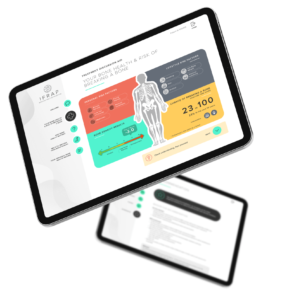Summary and next steps
iFraP has been designed so that the patient has the best quality information about why bone health is important, and what treatment involves, before, during and after the consultation. This gives the best chance of information ‘sticking’ and being remembered and also may increase the patient’s long-term commitment to medicine.
What happens next?
Thank you for completing this e-learning.
Now you have 3 things to do:
- Please prepare for the face-to-face session by using the tool as much as you can, with friends, colleagues and patients so you are familiar with it for the session. It is important that you practice using the tool before the face-to-face session. Feel free to use the tool in any consultations. Patients do not need to formally consent to using the tool but it would be good practice to explain you are practicing using the tool to help your explanations.
- Prepare an anonymised patient scenario to bring for the face-to-face session. This scenario should be based on a real encounter with a patient when practicing using the iFraP tool. You will be asked to give a brief description of how your encounter went and then pretend to be this patient in the role play activity so that a colleague can get practice and feedback supported by the group and a facilitator. It might help to jot down some notes including a fictitious name, and what particular beliefs, questions and concerns this patient had.
- Please complete the post-course knowledge questions and evaluation by following this link. Your answers will be treated in the strictest confidence. When you have completed and submitted your responses, you will receive a certificate of completion.
Further information
NHS England » Shared decision making
It’s Ok to Ask (stokeccg.nhs.uk)
Decision aids to help people who are facing health treatment or screening decisions | Cochrane
Teach-back: A systematic review of implementation and impacts | PLOS ONE
Communicating Risks and Benefits: An Evidence-Based User’s Guide (fda.gov)
